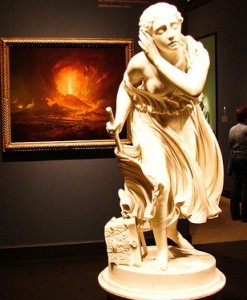 A new exposition was held last week at New York’s exhibition space, Discovery Times Square. The exhibit, which came all the way from Italy, captured the last glimpse of the old city of Pompeii.
A new exposition was held last week at New York’s exhibition space, Discovery Times Square. The exhibit, which came all the way from Italy, captured the last glimpse of the old city of Pompeii.
The city of Pompeii is a partially buried region in Rome. It was covered with 4 to 6 inches of mud, rock and volcanic ash about 2,000 years ago when the Mount Vesuvius erupted. It was a lost city for over 1,500 years, but was accidentally rediscovered in late 1950s.
Replicas of body casts, which were created by the researchers from the remains of the buried residents, lingered as a peculiar part of the exhibit. Some of them include a crouching man covering his mouth and a family of four gathering together.
The exhibit also features a short film that remakes what Pompeians might have done during the catastrophic event. The floor of the museum trembles as the volcano’s furrow widens. Also, a movie screen appears with a double door that opens to reveal a scene of 20 hardened bodies, posed from their last moments.
It was morning of August 24, 79 A.D. when Mount Vesuvius started releasing ash, noxious gases and mud- all without warning. The city was covered with darkness after a 12-mile black cloud blocked out the ray of the sun.
Pompeii’s land, located on the western coast of Italy, is now rich from volcanic soil and produced many kinds of crops such as wheat and wine grapes. The city became a sea and river port that exported goods all through the entire Roman Empire.
The city’s inhabitants are now living well as farmers, ship captains, bankers, and traders.

